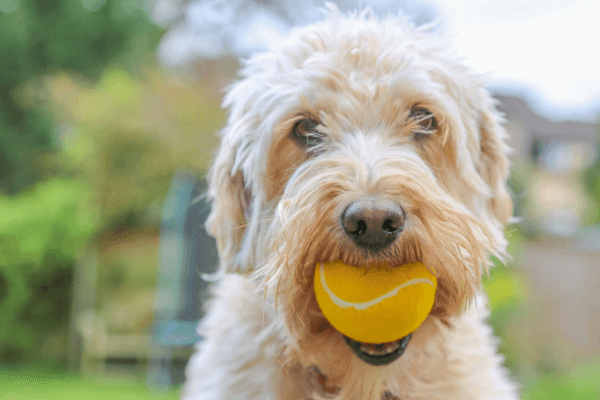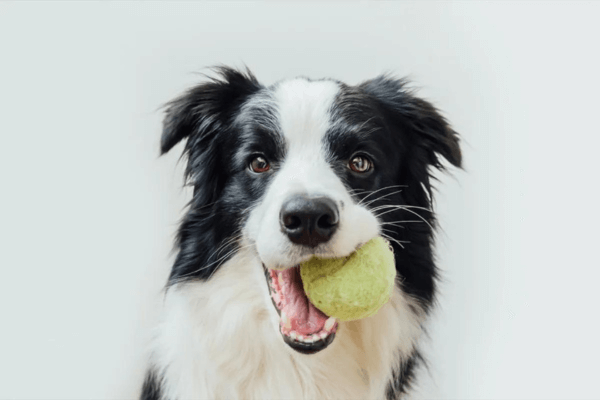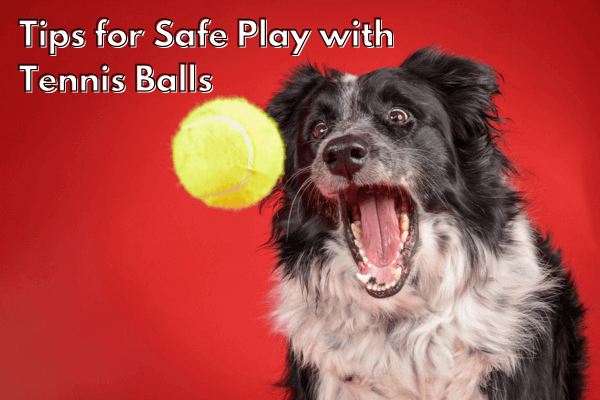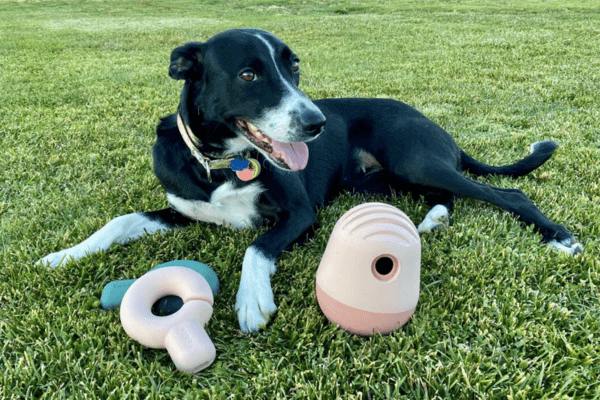Are tennis balls bad for dogs? This question has garnered significant attention from pet owners and veterinarians alike. The potential risks associated with using tennis balls as dog toys have raised concerns regarding the safety and well-being of our canine companions. Understanding these risks is crucial to making informed decisions about using tennis balls as playthings for dogs.
This article explores the potential dangers when dogs interact with tennis balls while considering any benefits they may offer. By examining empirical evidence and expert opinions, we will comprehensively analyze the topic.
Additionally, practical tips for safe play with tennis balls and alternative options for dog toys will be discussed.
It is important to note that this article aims to inform and guide pet owners who seek to prioritize their dogs’ health and happiness.
Are Tennis Balls Bad For Dogs: Potential Risks
When considering tennis balls as dog toys, one must be aware of the potential risks associated with their usage.

While tennis balls are commonly used for fetching and playing, they can pose certain dangers to dogs. One potential risk is the possibility of injuries that may occur during play. The firmness and size of a tennis ball can make it difficult for a dog to grip or catch, leading to strained muscles or sprained limbs.
Additionally, tennis balls can present choking hazards for dogs, especially if they are small or pieces become detached during play. Dogs who chew on tennis balls vigorously may accidentally swallow fragments, which could potentially obstruct their airways or cause digestive issues.
Therefore, when using tennis balls as dog toys, monitoring playtime closely and considering alternative options that minimize these potential risks is essential.
Benefits of Using Tennis Balls as Dog Toys
One advantage of utilizing tennis balls as playthings for canines is their ability to provide mental and physical stimulation. Dogs playing with tennis balls receive a range of health benefits, including improved cardiovascular fitness and enhanced muscle strength.

Additionally, the repetitive motion of chasing and retrieving the ball helps to improve their agility and coordination. The mental stimulation provided by playing with tennis balls also contributes to a dog’s overall well-being. It keeps their minds active, helping to prevent boredom and reduce destructive behavior.
Furthermore, playing fetch with a tennis ball can help strengthen the bond between humans and dogs through positive interaction and shared activity. Incorporating tennis balls into a dog’s playtime routine can benefit their physical and mental well-being.
Tips for Safe Play with Tennis Balls
This paragraph discusses some essential tips for safe play with tennis balls.
When engaging in play with tennis balls, it is crucial to maintain constant supervision and monitor the dog’s behavior to ensure safety.

An essential precaution is to use the appropriate size of a tennis ball suitable for the dog’s breed and avoid materials that may pose a choking hazard.
Lastly, regularly inspecting the condition of the tennis balls and replacing them when they show signs of wear or damage helps prevent potential accidents during playtime.
Supervision and Monitoring
Supervision and monitoring are crucial when allowing dogs access to tennis balls, as ensuring their safety and well-being requires active involvement from owners or caregivers. Dogs may become overly excited during playtime, causing them to chew or swallow tennis balls, leading to choking hazards or intestinal blockages. Additionally, some dogs may exhibit aggressive behavior towards the ball or other animals while playing with tennis balls, requiring proper training techniques and supervision to ensure a safe environment for all involved.
Owners can incorporate interactive games such as fetch or hide-and-seek to provide mental stimulation during play with tennis balls. This engages the dog’s physical abilities and challenges its cognitive skills. Owners must establish boundaries and rules during playtime with tennis balls, reinforcing obedience commands and rewarding good behavior. By incorporating these training techniques and maintaining constant supervision, owners can create a positive and safe experience for their dogs while enjoying the benefits of mental stimulation through play.
Table: Strategies for safe play with tennis balls
| Training Techniques | Mental Stimulation | Safety Measures |
| Obedience commands | Interactive games | Constant supervision |
| Consistent reinforcement | Cognitive challenges | Establishing boundaries |
| Positive reinforcement |
Proper Size and Material
Appropriate selection of size and material is crucial for ensuring the safety and enjoyment of canines during playtime with tennis balls.
When it comes to dog toy options, choosing the right size is essential. Tennis balls that are too small may pose a choking hazard, while those that are too large can be difficult for dogs to pick up or carry.
Selecting tennis balls specifically designed for dogs is recommended, as they are typically made with durable materials that can withstand rough play. Additionally, these toys often have extra features like reinforced stitching or squeakers to provide entertainment.
Providing appropriate toys not only promotes physical exercise but also helps prevent destructive behavior by redirecting a dog’s energy toward more suitable outlets.
Regular Inspection and Replacement
Regular inspection and replacement of canine play toys are essential for ensuring their safety and longevity, just like a well-maintained car requires routine maintenance and part replacement to prevent potential breakdowns. When it comes to dog toy durability, tennis balls are no exception. While they may provide hours of entertainment for our furry friends, they can wear down over time, posing a choking hazard or causing dental issues if the outer felt becomes damaged.
To help dog owners make informed decisions, here is a comparison table of some of the best tennis ball brands available: By regularly inspecting dog toys and replacing them when necessary, we can ensure that our beloved pets stay safe while enjoying their playtime.
| Brand | Material | Durability Rating |
| Brand A | Rubber | High |
| Brand B | Extra-durable fabric | Medium-high |
| Brand C | Natural rubber with reinforced seams | High |
| Brand D | Non-toxic synthetic material | Medium |
| Brand E | Recycled materials | Low-medium |
Alternatives to Tennis Balls for Dog Toys
One potential solution to avoid using tennis balls as dog toys is to explore alternative options that can provide mental and physical stimulation for our canine companions.

Dog-friendly toys that promote interactive play are a great way to keep dogs entertained while ensuring their safety. Many options are available in the market, such as puzzle toys that require dogs to solve a problem or find hidden treats, which can stimulate their cognitive abilities.
Interactive toys like treat-dispensing balls or tug-of-war ropes can engage dogs in physical activities while providing an outlet for their energy.
These alternatives not only prevent the potential hazards associated with tennis balls, such as choking or dental damage, but also offer new and exciting challenges for dogs, making playtime more enjoyable and rewarding.
See Also:
- Goughnuts Dog Toys
- Kong Dog Toys: The Perfect Gift for Any Pup
- Carrot Dog Toy
- Stylish Dog Bandanas: Trendy Accessories for Your Canine Companion
- DIY Dog Toys: Crafting Fun For Tail-Wagging Happiness on a Budget
Conclusion and Final Thoughts
In conclusion, exploring alternative options for dog toys can have numerous benefits for our furry friends. It can enhance their physical and mental well-being, provide new challenges, and keep them engaged and entertained. Safety should always be a priority when considering alternatives to tennis balls. Thankfully, there are various dog-friendly alternatives available in the market. Puzzles, treat-dispensing, and interactive toys that require problem-solving skills are adequate substitutes for tennis balls. These toys provide mental stimulation, promote cognitive development, and serve as tools for training. By incorporating these alternatives into a dog’s playtime routine, we can ensure their overall growth and happiness while keeping them away from potential hazards associated with tennis balls.
If you can’t find the right dog for you to adopt locally, please consider adopting a dog from Bone Voyage Dog Rescue. We’ll fly with your dog to you.
Frequently Asked Questions
Can dogs get sick from chewing on tennis balls?
Chewing on tennis balls can lead to dental problems in dogs due to the abrasive nature of the ball’s surface. Additionally, intestinal blockage is risky if a dog swallows parts of a tennis ball.
Are there any specific breeds that should not play with tennis balls?
Certain breeds may be at a higher risk of choking or dental damage when playing with tennis balls due to their different mouth structures. Therefore, it is essential to consider tennis ball safety for these breeds.
How often should I replace tennis balls when using them as dog toys?
Like fleeting bubbles in a summer breeze, tennis balls typically last several months as dog toys. However, prolonged use can lead to dental problems in dogs due to the abrasive nature of the ball’s surface.
Can playing with tennis balls help clean my dog’s teeth?
Chewing on tennis balls can lead to tooth damage in dogs due to the abrasive nature of the ball’s surface. Alternatives for cleaning a dog’s teeth include dental chews, dental toys, and regular brushing with dog-friendly toothpaste.
Are there any age restrictions for dogs playing with tennis balls?
Age restrictions for tennis ball play in dogs are not necessary. Using tennis balls as dog toys promotes physical exercise, mental stimulation, and dental hygiene through chewing and playing fetch.
